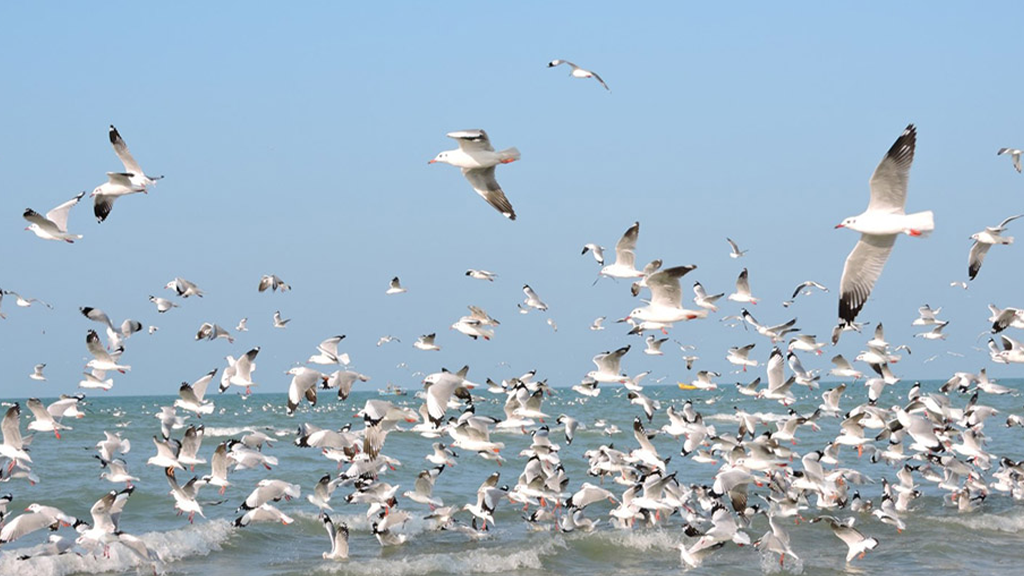The Sky is Changing
Every spring, I stand in my backyard, coffee in hand, watching flocks of birds sweep across the sky, their wings slicing through the dawn. But something’s off. The birds are arriving earlier than they did when I was a kid, their songs greeting me weeks before the first blooms. Scientists confirm what my gut’s been telling me: climate change is pushing millions of birds to migrate earlier, reshaping ecosystems in ways we’re only beginning to understand.
Why Are Birds Migrating Earlier?
The Climate Connection
Rising global temperatures are shifting the seasons, with spring arriving sooner in many regions. Birds, finely tuned to environmental cues like temperature and daylight, are adjusting their migration schedules to match. Studies show that spring migrations across the U.S. have advanced by about half a day per decade, with some species arriving up to a week earlier than they did 60 years ago. This isn’t just a quirk—it’s a survival strategy in a warming world.
How Temperature Shifts Affect Migration
Spring’s Early Arrival
Warmer winters and hotter springs are triggering earlier “green-ups,” when plants bloom and insects emerge. Birds rely on these resources for fuel during their grueling journeys. A 2024 study in PNAS found that spring green-up is advancing faster than many birds can keep up, especially long-distance migrants like warblers. This mismatch leaves them scrambling for food when they arrive.
The Role of Day Length
Birds also use daylight as a migration cue, but unlike temperature, day length doesn’t change with climate. This creates confusion for species like vireos, whose hardwired instincts tie migration to fixed calendar dates. As springs warm earlier, these birds risk arriving too late to capitalize on peak food availability, threatening their survival.
Regional Differences in Migration Shifts
North America’s Changing Flyways
In North America, migration timing varies by region. Northern states, warming faster than southern ones, see the most dramatic shifts—some birds arrive 1.5 days earlier per decade at latitudes like Montana’s border with Wyoming. Radar data from 1995 to 2018 shows billions of birds adjusting their routes, with the Mississippi River corridor buzzing earlier each year.
Europe and Beyond
Across Europe, a study of 413 species across five continents found birds migrating a week earlier than in the 1950s. Short-distance migrants, like the Eastern Phoebe, adapt better, tracking local conditions. But long-distance travelers, wintering in places like South America, struggle to sync with distant climates they can’t sense.
The Ripple Effects of Early Migration
Food Scarcity and Survival
Missing the Insect Buffet
Migratory birds like the Black-throated Blue Warbler time their journeys to hit peak insect populations. But when spring arrives early, insects hatch and vanish before the birds land. A 2024 Audubon report noted that this mismatch could starve birds or weaken their chicks, reducing population numbers over time.
Competition for Resources
Early arrivals can spark turf wars. Birds landing ahead of schedule may fight over limited food, with aggressive species outcompeting smaller ones. In California, drought-dried wetlands force birds like the White-faced Ibis to skip rest stops, risking exhaustion or starvation. It’s a grim domino effect: less food, fewer chicks, weaker flocks.
Impacts on Ecosystems
Disrupted Food Chains
Birds are ecosystem linchpins, controlling insect populations and spreading seeds. When they migrate early, the balance tips. Fewer birds eating pests can lead to insect booms, damaging crops or forests. Meanwhile, predators like hawks, expecting birds at certain times, may go hungry, cascading through the food web.
Breeding Challenges
Early migration can mess with breeding. Birds arriving too soon may face cold snaps that kill early-blooming plants or their chicks. A Nature Climate Change study found that species unable to adjust breeding times—like some warblers—face declining populations, as their chicks hatch out of sync with insect peaks.
Comparing Short- and Long-Distance Migrants
| Migrant Type | Adaptability | Challenges | Examples |
|---|---|---|---|
| Short-Distance | High: Tracks local conditions | Cold snaps, resource competition | Eastern Phoebe, American Robin |
| Long-Distance | Low: Relies on fixed cues | Mismatch with food, delayed breeding | Wilson’s Warbler, Vireo |
Short-distance migrants, traveling within North America, adapt better to climate shifts, while long-distance species, like those wintering in South America, lag behind, tied to unchanging cues like day length.
The Science Behind the Shift
Radar Data Reveals Patterns
A Continental View
Using 24 years of NOAA radar data, researchers tracked billions of birds across the U.S., spotting circular “blobs” of flocks on radar scans. This revealed spring migrations shifting half a day earlier per decade, with northern regions showing the starkest changes. Fall migrations, messier and less urgent, show weaker shifts.
The Role of AI
AI tools like MistNet revolutionized this research, filtering out rain to focus on birds in radar images. What once took years of manual analysis now takes days, giving scientists a clearer picture of how climate drives migration changes across hundreds of species.
Museum Specimens Tell a Story
Chicago’s Collision Data
At the Field Museum in Chicago, 70,000 bird specimens—collected after building collisions from 1978 to 2016—show birds shrinking in size and growing longer wings. A 2021 Journal of Animal Ecology study found these changes are decoupled from migration timing, suggesting climate affects birds in multiple, complex ways.
Morphological Changes
Smaller bodies help birds dissipate heat in warmer climates, while longer wings boost flight efficiency for faster migrations. These adaptations, seen in species like Wilson’s Warblers, hint at evolutionary pressures but don’t fully explain earlier arrivals.
Pros and Cons of Early Migration
Pros
- Access to Early Resources: Arriving before competitors can secure prime nesting spots and food.
- Extended Breeding Seasons: Some species, like robins, may squeeze in extra clutches of eggs.
- Adaptation Potential: Flexible species can evolve new migration patterns over generations.
Cons
- Food Mismatches: Early arrivals may miss peak insect or plant availability.
- Cold Snap Risks: False springs can freeze early blooms or kill chicks.
- Increased Competition: Overlapping arrivals strain limited resources, sparking conflicts.
What Can Be Done?
Conservation Efforts
Protecting Stopover Sites
Wetlands and forests are critical rest stops for migrants. Groups like Ducks Unlimited work to restore habitats, especially in drought-hit areas like California’s Central Valley. Supporting these efforts ensures birds have safe havens to refuel.
Citizen Science
Platforms like eBird let birders log sightings, feeding data to researchers. You can join local Audubon chapters or use apps to track migrations, helping scientists monitor how birds adapt to climate shifts. Visit eBird to start.
Individual Actions
Plant Native Species
Turn your backyard into a bird buffet by planting native flowers and shrubs that bloom in sync with migrations. Check Audubon’s Native Plant Database for region-specific options.
Reduce Window Collisions
Birds often crash into reflective windows. Apply decals or screens to make glass visible. Products like WindowAlert are affordable and effective for home use.
People Also Ask (PAA)
Why are birds migrating earlier?
Rising temperatures trigger earlier springs, prompting birds to adjust migration to match food availability. Studies show spring migrations are advancing by about half a day per decade.
How does climate change affect bird migration?
Warmer temperatures and shifting seasons disrupt food availability and breeding cycles. Birds may arrive too early or late, facing starvation or competition.
Which birds are most affected by early migration?
Long-distance migrants, like warblers and vireos, struggle most, as they rely on fixed cues like day length, which don’t align with changing climates.
Can birds adapt to climate change?
Some species, like short-distance migrants, adapt by tracking local conditions. Others may evolve smaller bodies or longer wings, but rapid climate shifts challenge their flexibility.
A Personal Reflection
Last spring, I joined a local birding group, binoculars in tow, hoping to spot a Scarlet Tanager. We saw it—two weeks early, perched on a budding maple. It was thrilling, but our guide’s face fell. “They’re out of sync,” she said, explaining how early arrivals could miss the insects they need. That moment stuck with me, a reminder that nature’s rhythms, once steady, are now a frantic scramble. It’s not just about birds; it’s about the world we share with them.
The Bigger Picture
A Global Phenomenon
This isn’t just a North American story. From Europe to Asia, birds are shifting their migrations. A 2017 study of 413 species across five continents found consistent early arrivals, driven by warming climates. The stakes are high: one in five migratory species faces extinction risks, battered by habitat loss and climate chaos.
What’s at Stake?
If birds can’t adapt, ecosystems could unravel. Insect booms without bird predation could harm agriculture. Fewer seeds spread by birds could stunt forest regrowth. And for us birdwatchers, the skies could grow quieter, robbing us of nature’s symphony.
Tools to Learn More
Best Resources for Bird Migration Tracking
- eBird: Log sightings and explore migration maps. Free and user-friendly. (eBird)
- BirdCast: Real-time migration forecasts using radar data. Great for planning birding trips. (BirdCast)
- Audubon’s Migration Explorer: Interactive tool to visualize bird movements. (Audubon)
Apps for Birders
| App | Features | Cost |
|---|---|---|
| eBird | Sightings, maps, community data | Free |
| Merlin Bird ID | Identify birds by photo or sound | Free |
| Audubon Bird Guide | Species info, migration alerts | Free |
FAQ
How does early migration affect bird populations?
Early migration can lead to food shortages, reducing chick survival and population sizes. Long-distance migrants are hit hardest due to mismatched timing.
Are all bird species migrating earlier?
Not all. Short-distance migrants adapt better, while long-distance species struggle. Some, like ducks, show minimal shifts in fall migrations.
Can I help migratory birds in my backyard?
Yes! Plant native species, reduce window collisions with decals, and avoid pesticides to support insect populations birds rely on.
How do scientists track bird migration changes?
They use radar data, AI tools like MistNet, and museum specimens to analyze timing and physical changes over decades.
What happens if birds can’t adapt to climate change?
Populations may decline, disrupting ecosystems. Insect surges could harm crops, and predators may starve, affecting biodiversity





